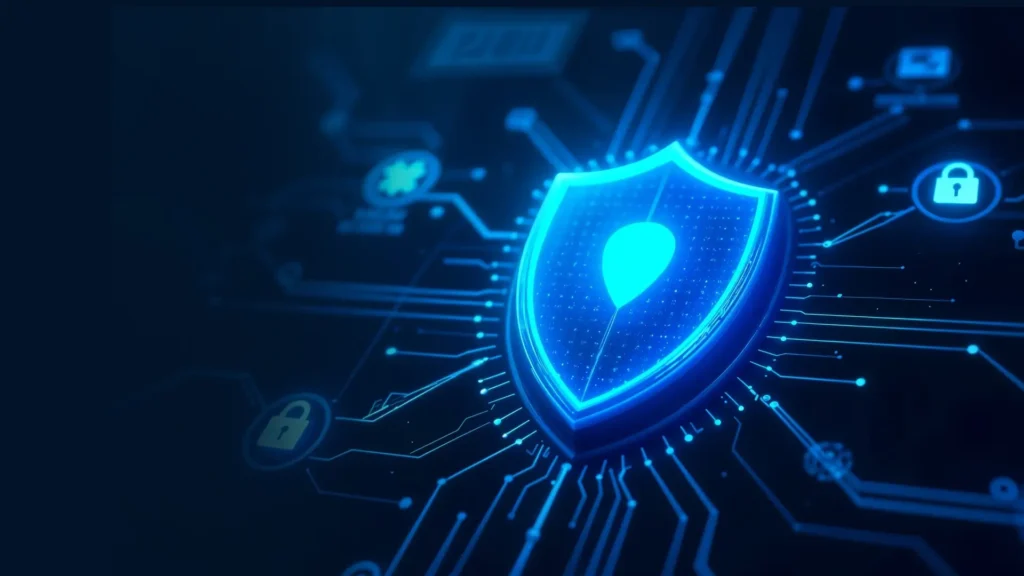- In today’s digital age, digital identity management (DIM) is crucial for protecting sensitive healthcare data, including electronic health records (EHRs) and personally identifiable information (PII).
- The healthcare industry is particularly vulnerable to cyberattacks due to outdated IT systems and reliance on third-party vendors. Over 124 million health records were breached in 2023 alone.
- Data breaches can have devastating effects, from financial losses and identity theft to eroded patient trust. For example, the HCA Healthcare breach affected 11.3 million patients and led to significant financial and emotional repercussions.
- Effective DIM involves several key steps like data discovery, remediation, and role-based access control (RBAC). However, managing and securing a vast amount of data scattered across various systems can be a logistical nightmare. And with multiple data management point solutions to take care of each of the requirements mentioned above, the challenge just gets worse.
- That’s when Unified Data Management (UDM) comes in. DIM within UDM isn’t just about efficiency; it’s about reclaiming control. It empowers CISOs with a single pane of view for both user identities and data access, enabling a data-centric approach to healthcare security.
In today’s hyper-connected world, our physical selves are increasingly mirrored by digital ones. This digital identity, a constellation of data points ranging from usernames and passwords to social media profiles and medical records, grants us access to online services and shapes our interactions with the world. However, for the healthcare industry, where privacy is paramount, and a data breach can have life-altering consequences, managing these digital identities securely is a complex and ever-evolving challenge.
Digital identity management (DIM) refers to the practices and technologies used to establish, maintain, and control access associated with digital identities. In simpler terms, it’s about ensuring the right people have access to the right data at the right time. This becomes particularly crucial in healthcare, where a patient’s electronic health record (EHR) is a treasure trove of sensitive PII (Personally Identifiable Information) – name, address, social security number, medical history, and more. A study by the HIPAA Journal found that in 2023, over 124 million health records were breached in a total of 725 hacking incidents, making it the worst year ever for attacks.
The consequences of a healthcare data breach can be devastating. Stolen medical records can be used for fraudulent insurance claims, identity theft, or even targeted attacks on vulnerable patients. The largest data breach of 2023 was the hack of HCA Healthcare, which affected 11.3 million patients, leading to financial losses, emotional distress, and a class-action lawsuit against the healthcare giant.
The healthcare industry’s vulnerability to cyberattacks isn’t a matter of “if” but “when.” Let’s take a closer look.
The Swiss Cheese of Security: How Healthcare Becomes a Hacker’s Playground
Consider the sheer volume and variety of PII data that healthcare organizations collect. Electronic health records (EHRs) are the tip of the iceberg. Appointment scheduling systems, lab results, pharmacy records, and even fitness trackers synced with medical apps – all contribute to a sprawling data ecosystem.
The sources of this data collection are equally concerning. Many healthcare organizations operate on a patchwork of legacy IT systems, some dating back decades. These systems often lack robust security features and are difficult to integrate with newer technologies. Furthermore, the industry relies heavily on third-party vendors for everything from billing software to medical devices. While these vendors play a crucial role in the healthcare delivery process, they also create additional entry points for attackers. A compromise with a single vendor can expose the data of numerous healthcare institutions.
The interconnectedness of the healthcare ecosystem further compounds the problem. Patient care often necessitates sharing data across hospitals, clinics, labs, and pharmacies. While secure data exchange protocols exist, ensuring consistent implementation across all stakeholders remains a challenge. 60% of healthcare data breaches in 2021 were reportedly caused by third-party vendors.
This tangled web of data collection and sharing creates a perfect storm for cybercriminals.
- Phishing Attacks: These fraudulent emails or messages trick healthcare workers into clicking malicious links or revealing login credentials. Preying on the time constraints and pressures faced by medical professionals, hackers can exploit a single compromised account to gain access to a vast amount of sensitive data. Email-related cybercrime, including phishing attacks and business email compromise in the healthcare industry, rose by 42% last year.
- Ransomware Attacks: Malicious software programs encrypt a victim’s data, rendering it inaccessible. Hackers then demand a ransom payment in exchange for decryption. The pressure to restore access to critical patient data can make healthcare organizations prime targets for ransomware attacks. The average cost in healthcare for remediating ransomware is $1.27 million USD, with some studies reporting the total average cost for a ransomware attack in healthcare as being $4.6 million per incident.
- Malware Attacks: Malicious software can be downloaded unknowingly through attachments or infected websites. Once on a system, malware can steal data, disrupt operations, or even disable critical medical equipment. Hospitals are increasingly reliant on connected medical devices like pacemakers and insulin pumps. These devices can be vulnerable to malware attacks, potentially putting patients’ lives at risk.
The consequences of a successful cyberattack on a healthcare organization can be devastating. Beyond the financial losses associated with data recovery and litigation, a breach can erode patient trust and disrupt critical medical services. A survey by the American Medical Association found that 75% of patients expressed concern about protecting their personal health data, and only 20% said they knew the scope of companies and people with access to their medical information. A data breach that exposes this data can lead to identity theft, medical fraud, and even discrimination based on health conditions.
In this environment of escalating cyber threats, digital identity management (DIM) emerges as a potential lifeline. DIM is a framework of policies and technologies that govern how individuals and devices access healthcare data and systems. It ensures that only authorized individuals have access to the information they need to do their jobs and that this access is granted based on their specific roles and responsibilities.
Digital identity management (DIM) holds immense promise for securing the sprawling healthcare data ecosystem. However, its effectiveness hinges on one crucial factor: wresting control over the vast amount of unstructured patient health information (PHI) residing within healthcare organizations.
Unstructured Data: The Achilles’ Heel of Digital Identity Management in Healthcare

This unstructured data – doctor’s notes, radiology reports, text messages – represents a significant security vulnerability. Unlike structured data in EHRs, it often lacks a standardized format and resides in disparate locations across various systems. Traditional security measures struggle to identify, classify, and secure this scattered information, creating blind spots for hackers to exploit.
Addressing this challenge requires a systematic, multi-step solution:
Data Discovery: Shining a Light on the Dark
The first step is like a medical diagnosis – identifying the problem. Here, it involves locating all the unstructured PHI within the organization’s IT infrastructure. Healthcare organizations use data discovery tools to identify and locate PHI (Protected Health Information) across all their systems and applications. These tools employ sophisticated algorithms and pattern recognition techniques to scan for PHI even in unstructured formats. This includes doctor’s notes embedded in PDFs, radiology reports stored as images, and even text messages between patients and providers. Unlike a manual search through a physical attic, data discovery tools can systematically examine vast amounts of data to pinpoint PHI with high accuracy. Additionally, these tools can be customized with specific keywords or phrases associated with PHI, ensuring a more comprehensive identification of sensitive information.
Data Remediation: Classification and Control
Identifying PHI data triggers a multi-step data remediation process to ensure compliance with HIPAA standards. This process involves both classifying and encrypting the discovered data. First, the PHI needs to be categorized by type. This could include medical history, medication lists, allergies, and any other information that falls under the definition of PHI. Once categorized, the data is then secured using Data Quarantine. This means upon identification, PHI is segregated and placed in a secure, restricted environment. This isolation prevents unauthorized access and potential breaches. The quarantined data can then be further evaluated for its retention requirements. Then comes Data Deletion. Data that has reached the end of its legal or business justification for storage is securely deleted. This minimizes the organization’s exposure to risk and ensures compliance with data minimization principles of HIPAA. Encryption and De-identification can be used in conjunction with Data Quarantine and Data Deletion to further enhance data security. Encryption essentially scrambles the data, making it unreadable without a decryption key. This additional layer of security protects the confidentiality of sensitive patient information. Additionally, depending on the specific needs and regulations, data remediation might also involve de-identification. De-identification removes certain personal identifiers, like names or Social Security numbers, from the data while still preserving its analytical value for research or other purposes. Data remediation solutions can automate much of this process. These solutions can leverage pre-defined criteria to classify PHI and then trigger the appropriate action – quarantine or deletion – based on its sensitivity and retention requirements.
Role-Based Access Control (RBAC): Tailoring Access for Each Player
Digital identity management thrives on the principle of “least privilege.” RBAC, a cornerstone of DIM, ensures that only authorized individuals have access to specific data sets. This means granting access rights based on a user’s role and responsibilities within the healthcare organization. For instance, in a healthcare organization, each staff member, from nurses to specialists, play a crucial role. RBAC functions like a sophisticated security system within the organization. It grants access privileges based on each individual’s role and responsibilities. Just like a security guard wouldn’t give a delivery person the master key, a nurse wouldn’t need the same level of access to a patient’s medical history as a specialist. RBAC leverages pre-defined permissions tied to user roles. This creates a layered security system. A hacker might gain access to a specific user account, but thanks to RBAC, they wouldn’t have the keys to unlock the entire vault of PHI. This significantly minimizes the risk of unauthorized data exposure, safeguarding patient privacy and ensuring HIPAA compliance.
Managing and securing a vast amount of data scattered across various systems can be a logistical nightmare. And with multiple data management point solutions to take care of each of the requirements mentioned above, the challenge just gets worse. We’re talking data siloes and unnecessary overheads.
Fragmented Identities vs. Unified Defense: The CISO’s Choice in Healthcare Data Identity Management
The CISO’s war room faces a silent threat: fragmented data identities. Their mission is to enforce HIPAA compliance and prevent breaches, but their biggest obstacle is the very foundation designed to manage user access – a labyrinth of disjointed data management point solutions.
This fragmented landscape creates identity silos, hindering a comprehensive view of user entitlements across Protected Health Information (PHI). Imagine a doctor needing access to a patient’s medical records. Their credentials might be validated in one system for the EMR, but lack authorization in another system holding crucial clinical notes. This fragmentation creates blind spots, exposing potential vulnerabilities and hindering proactive security measures.
The consequences are significant. Data breaches in healthcare cost millions per incident, and fragmentation fuels these breaches. Disparate identity systems make threat detection a challenge. Security analysts struggle to correlate suspicious activity across siloed systems, delaying incident response. Imagine an Intrusion Detection System (IDS) detecting a compromised user account on one system, but lacking visibility into another system where that user has access to sensitive patient data. This delays containment, putting patient privacy at risk.
Data Identity Management (DIM) using Unified Data Management (UDM) software is the solution. UDM acts as a central hub for all patient data identities, offering a holistic view and shattering identity silo shackles. Integration with access control systems allows for centralized user provisioning and permission management. UDM empowers fine-grained access controls, restricting user privileges to specific data sets based on their role and responsibilities. This minimizes the potential damage from compromised credentials or insider threats.
UDM goes beyond access control. It integrates with data discovery tools, unearthing hidden troves of unstructured PHI. Streamlined data remediation becomes a reality with functionalities for data classification (identifying PII), data conversion (transforming data formats for consistent encryption), and even data quarantine for sensitive information. Additionally, UDM supports robust encryption algorithms, ensuring data at rest remains unreadable even in a breach.
Data Dynamics’ award-winning Unified Data Management (UDM) software goes beyond just managing data; it empowers healthcare organizations to achieve true Data Identity Management (DIM). Our UDM software seamlessly integrates with existing access control systems, enabling centralized user provisioning and permission management. This, coupled with UDM’s data discovery and remediation functionalities, ensures a holistic view of both user identities and the data they can access. Healthcare organizations can leverage Data Dynamics’ UDM to implement fine-grained access controls, fortify data security with encryption, and gain profound insights into unstructured content – all within a single, scalable software. This empowers CISOs to transition from battling fragmented identities to wielding a unified data security shield, ensuring HIPAA compliance and safeguarding patient privacy.
DIM within UDM isn’t just about efficiency; it’s about reclaiming control. It empowers CISOs with a single pane of view for both user identities and data access, enabling a data-centric approach to healthcare security. In today’s threat landscape, fragmented identities are a vulnerability healthcare organizations can’t afford. UDM with DIM offers a strategic solution, transforming CISOs from silo navigators into commanders wielding a unified data security shield.
To learn more about how Data Dynamics can help, visit www.datadynamicsinc.com or reach out to us at solutions@datdyn.com or (713)-491-4298.






